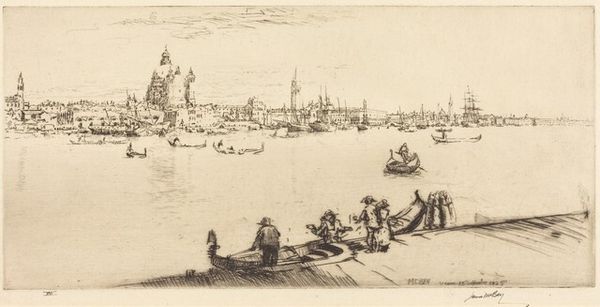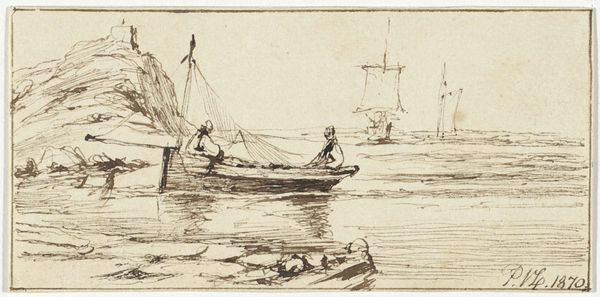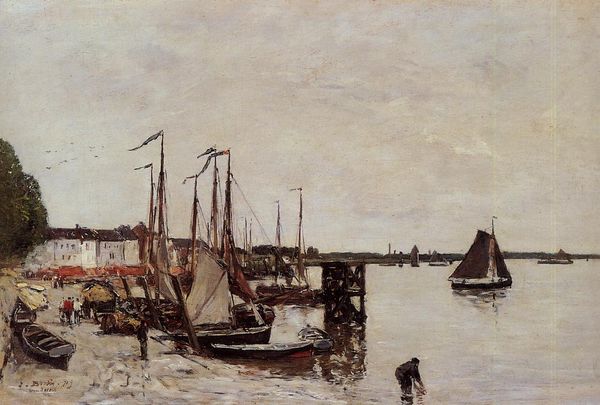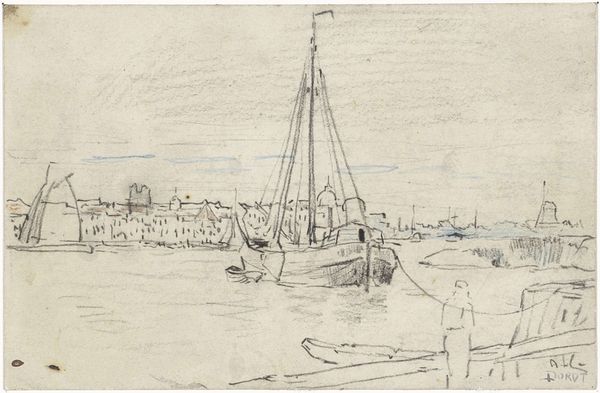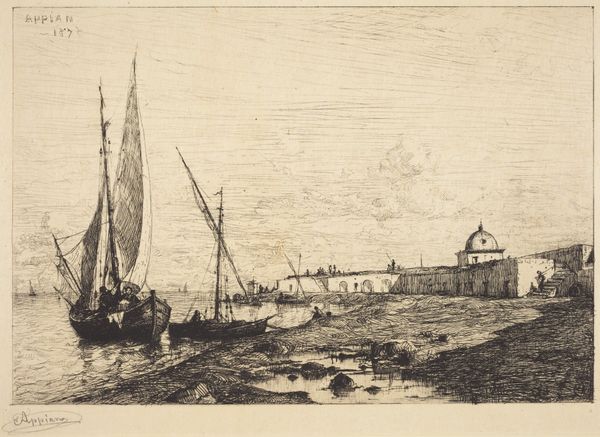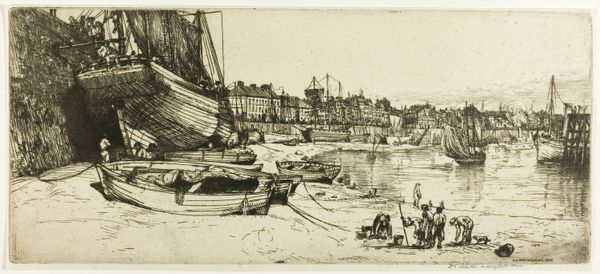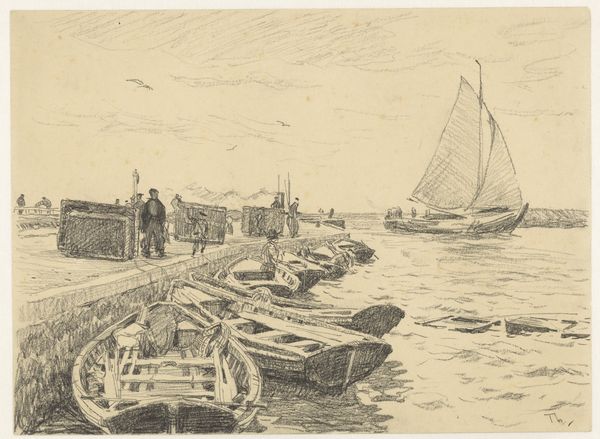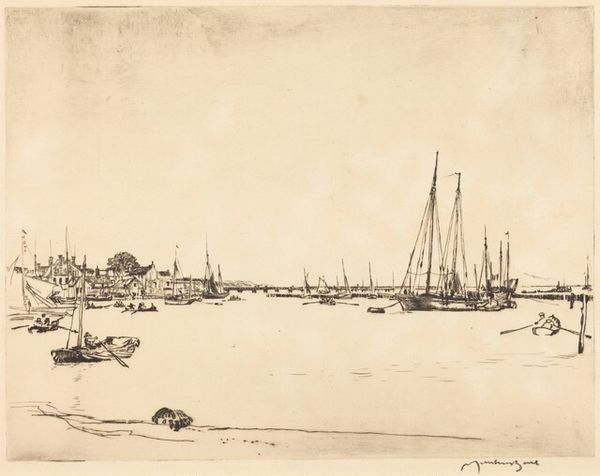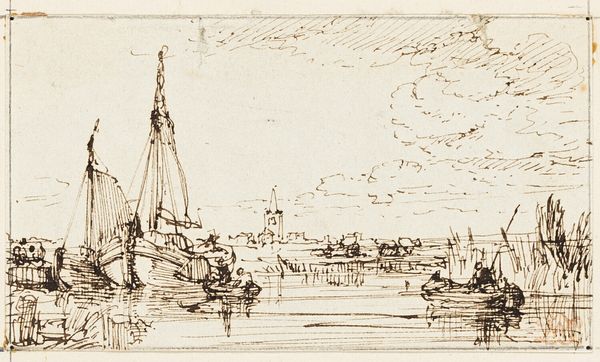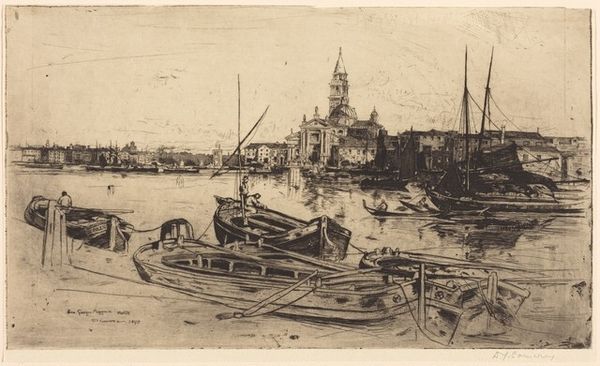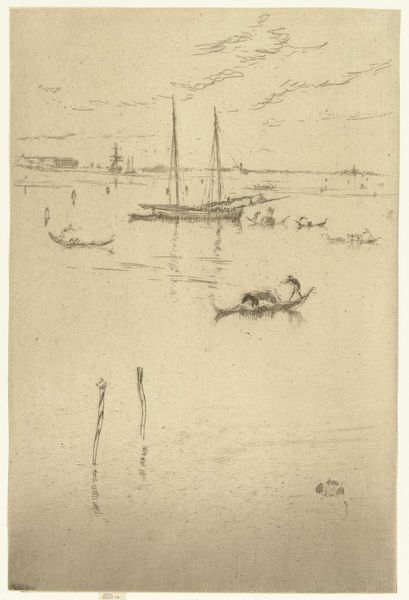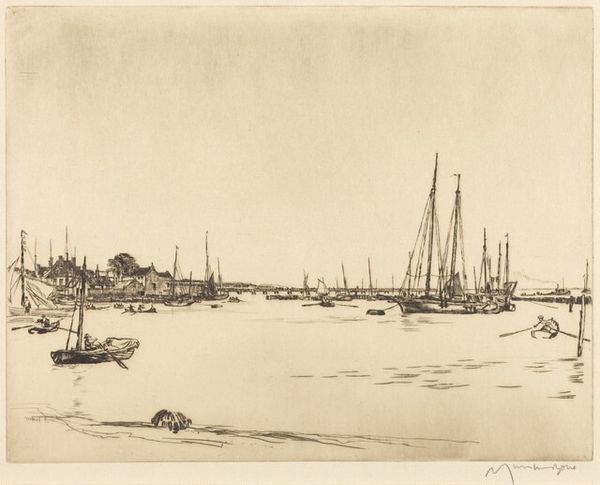
drawing, paper, ink, pencil
#
drawing
#
narrative-art
#
impressionism
#
landscape
#
paper
#
form
#
ink
#
pencil
#
line
#
cityscape
#
genre-painting
#
post-impressionism
#
realism
Copyright: Public domain
Curator: Let's take a closer look at this drawing, “Bank of the Rhone at Arles,” created by Vincent van Gogh in 1888 using pencil and ink on paper. What are your initial thoughts? Editor: It feels delicate and almost dreamlike. The use of line is incredible—so much texture conveyed with such simple marks. There's a hazy quality to it that belies its actually meticulous rendering. Curator: Absolutely. It's a fascinating window into van Gogh's time in Arles. He arrived seeking solace and a community of artists, deeply influenced by Impressionism and the southern light, and we see it in his handling of perspective. We have to acknowledge his struggles though: the sense of alienation, even madness that characterized his time and which speaks to questions of labor. This image really showcases this tense paradox. Editor: Speaking of labor, note the materials: ink and pencil. Humble, readily available, tools. This piece highlights art production and speaks to the lives of everyday people interacting with the waterway, their vessels—essential to trade, but all seemingly within Van Gogh’s grasp. Look at the horses towing barges in the shallow water – those animals would be valuable to the laborers on land and water here. Curator: Right. His artistic practice in Arles reveals this interesting interplay. He was drawn to everyday scenes and portraits of the working class. While formally adopting impressionist and post-impressionist strategies, van Gogh wanted his works to speak about working class subjectivity. This work is representative of those political interests, a desire to explore notions of work and everyday experience as an extension of those aesthetic and philosophical tenets. Editor: There's also something grounding about the labor it portrays that gives the image substance—that constant relationship of natural resources and hard labor. This scene wasn’t only a fleeting beautiful thing but a snapshot of resource-intensive commerce that impacted local existence. And the very materials with which van Gogh renders that scene mirror those efforts, the toil, and even the waste inherent in human endeavor. Curator: Indeed, that’s something which Van Gogh might well appreciate: the understanding that the artwork also must acknowledge the value and materiality that underlines experience and our subjective sense of it. Editor: Ultimately, that is what speaks to me: it brings materiality to bear in assessing labor and history and highlights its constant connection to ourselves, even here, contemplating a seemingly straightforward piece of Impressionist beauty.
Comments
No comments
Be the first to comment and join the conversation on the ultimate creative platform.
